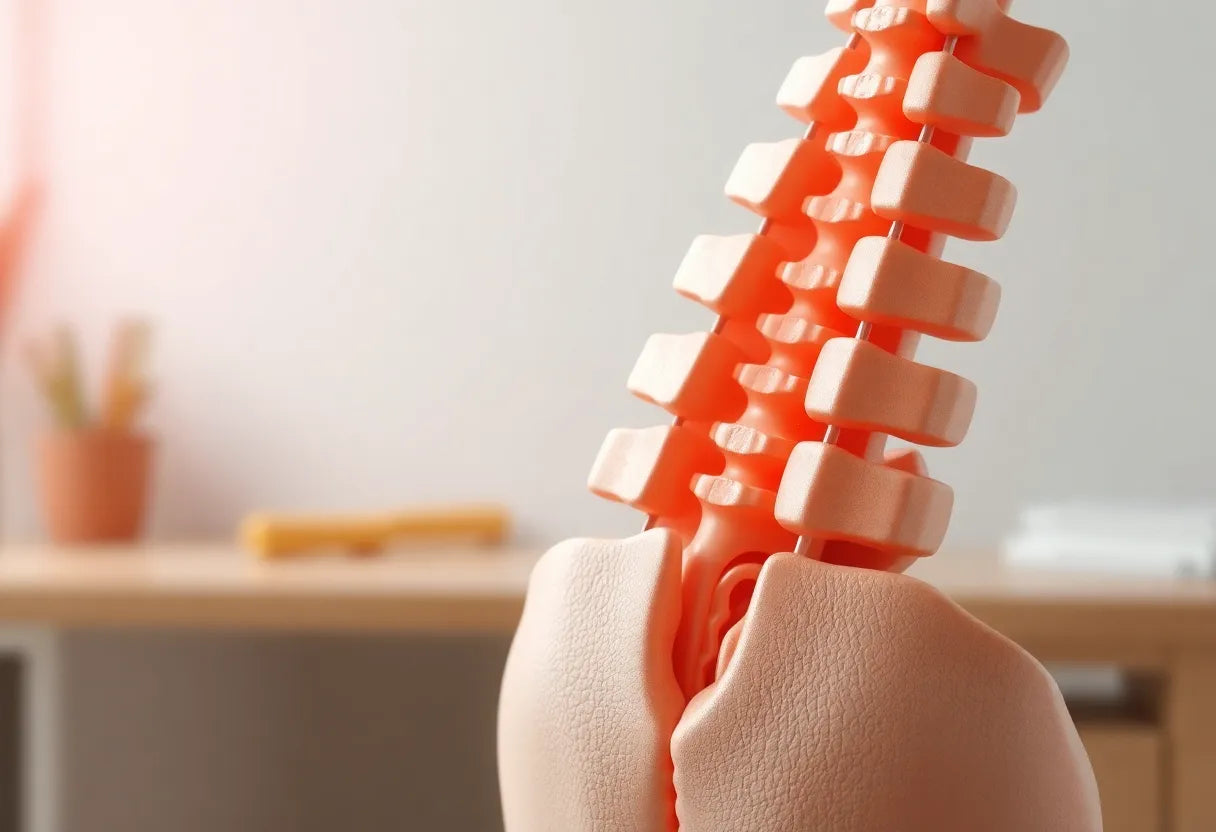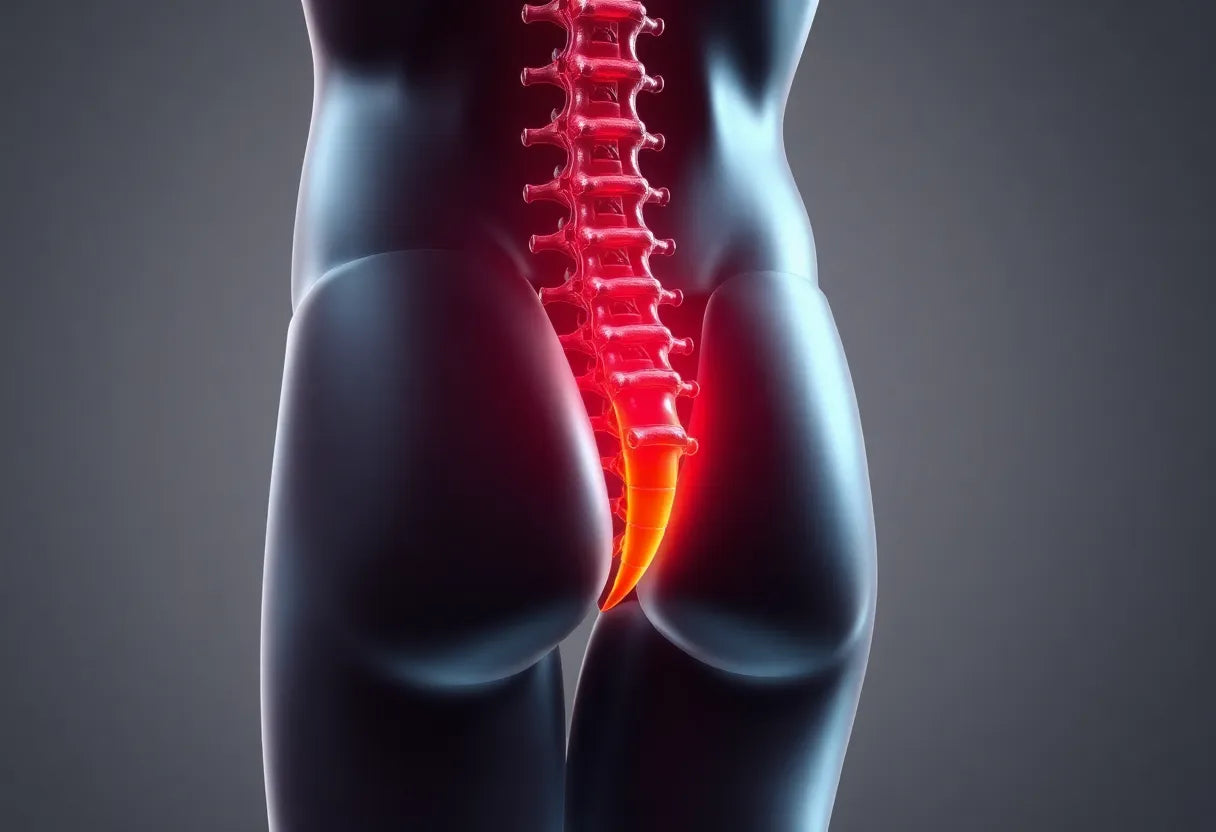Facet joint syndrome is a common condition affecting the lumbar region of the spine, often leading to chronic low back pain. These small stabilizing joints located between and behind adjacent vertebrae in the spine can become a significant source of discomfort when they degenerate or become inflamed. The lumbar area, in particular, bears a considerable amount of the body’s weight, making it susceptible to such issues.
recognizing the symptoms and challenges
Individuals suffering from facet joint syndrome typically experience localized pain, stiffness, and reduced mobility. This discomfort can make everyday activities challenging, impacting the overall quality of life. Pain is often exacerbated by movements such as twisting or bending backward, which put additional stress on the affected joints. Addressing these symptoms is crucial not only for pain relief but also for maintaining a healthy and active lifestyle.
the role of exercises in managing facet joint syndrome
Engaging in targeted exercises is a pivotal strategy for managing facet joint syndrome, particularly in the lumbar region. These exercises are designed to improve spinal stability, increase flexibility, and relieve tension in the affected area. Unlike surgical interventions or long-term medication use, exercises offer a non-invasive and cost-effective approach to pain management. By strengthening the muscles that support the spine, these exercises help reduce the load on the facet joints, thereby alleviating pain and preventing further deterioration.
Incorporating specific lumbar exercises into your routine can significantly enhance your ability to manage facet joint syndrome. This proactive approach not only addresses existing pain but also helps in preventing future episodes by improving the overall health and function of the spine. As we delve into the specifics of these exercises, it’s important to remember that consistency and proper technique are key to achieving the best outcomes.
medical context and guidance for lumbar facet joint syndrome
Before diving into specific exercises, it is crucial to understand the medical context surrounding lumbar facet joint syndrome. Consulting with healthcare professionals, such as physiotherapists or orthopedic specialists, is essential before beginning any exercise regimen. This ensures that the exercises are safe and tailored to your individual needs, taking into account the severity of your condition and any other health considerations you may have.
The lumbar facet joints play a pivotal role in the spine's movement and stability. These small joints, located at the back of the spine, allow for flexibility and support. When facet joints become inflamed or degenerate, they can cause significant discomfort. Exercises specifically targeting these joints aim to alleviate pain by enhancing spinal stability, improving flexibility, and reducing stress on the affected areas.
key exercises for managing lumbar facet joint syndrome
pelvic tilt
The pelvic tilt exercise is designed to help flatten the lumbar lordosis, which is the natural inward curve of the lower back, thereby relieving pressure on the facet joints. To perform a pelvic tilt, lie on your back with knees bent and feet flat on the floor. Tighten your abdominal muscles and press your lower back into the floor, holding the position for a few seconds before relaxing. Repeat this movement 10 to 15 times, focusing on controlled breathing and maintaining proper posture throughout.
bridging
Bridging exercises are effective in strengthening the glutes and lumbar stabilizers, which are crucial for overall spinal support. To execute a bridge, lie on your back with knees bent and feet hip-width apart. Lift your hips towards the ceiling, creating a straight line from your knees to your shoulders. Hold for a few seconds before lowering your hips back to the starting position. Aim for 10 to 15 repetitions, ensuring your movements are smooth and controlled.
knee-to-chest stretch
The knee-to-chest stretch elongates the lumbar spine and relieves tension. Begin by lying on your back and gently pulling one knee towards your chest while keeping the other leg straight. Hold the stretch for 15 to 30 seconds, then switch legs. Perform this stretch two to three times on each side, maintaining a comfortable position and avoiding any strain.
dead bug (core)
The dead bug exercise focuses on neuromuscular lumbar stabilization and core strengthening. Lie on your back with your arms extended towards the ceiling and your knees bent at a 90-degree angle. Slowly lower one arm and the opposite leg towards the floor while keeping your core engaged, then return to the starting position. Alternate sides and perform 10 to 15 repetitions per side, ensuring your movements are controlled and your core remains engaged throughout.
child’s pose
Child’s pose is a gentle stretch that helps release tension in the back and hips. Begin on your hands and knees, then sit back on your heels while extending your arms forward on the floor. Hold the pose for 30 seconds to a minute, breathing deeply and allowing your body to relax. Modifications can be made to accommodate varying flexibility levels, such as placing a pillow under the hips for additional support.
standing forward bend
The standing forward bend is a gentle stretch for the lumbar area, promoting flexibility and easing stiffness. Stand with your feet hip-width apart, and slowly bend forward at the hips, allowing your arms to hang towards the floor. Keep your knees slightly bent to avoid strain, and hold the position for 15 to 30 seconds. Return to standing by rolling up slowly through the spine.
research-supported effectiveness
Clinical evidence supports the effectiveness of lumbar stabilization exercises in reducing pain associated with facet joint syndrome. Studies have shown that these exercises can significantly decrease pain and improve function by enhancing spinal stability and muscle balance. Additionally, combining exercises with pain neuroscience education and manual therapies, such as muscle energy technique, can offer greater benefits than exercise alone. This comprehensive approach not only addresses immediate pain relief but also contributes to long-term management and prevention of facet joint syndrome.
additional considerations for lumbar facet joint syndrome exercises
When integrating lumbar exercises into your routine for facet joint syndrome, it's essential to consider safety precautions and lifestyle adjustments to maximize benefits and minimize risks. While exercises are beneficial, they must be performed correctly and progressively to avoid exacerbating pain. Always listen to your body and consult with a healthcare provider if you experience any discomfort or uncertainty about your exercise regimen.
safety precautions
Before beginning any exercise program, particularly for facet joint syndrome, it's crucial to be aware of red flag symptoms that might indicate a need to pause or modify your routine. If you experience acute pain flare-ups, numbness, tingling, or weakness in your legs, it's advisable to stop exercising and seek medical advice. These symptoms could indicate a more serious condition that requires professional evaluation.
integration with lifestyle
In addition to exercises, consider making complementary lifestyle changes to support your overall spine health. Ergonomic adjustments, such as using a lumbar support pillow or adjusting your workstation, can help reduce strain on your back. Incorporating stress management techniques, like mindfulness or yoga, can also enhance your exercise outcomes by reducing muscle tension and promoting relaxation.

Lumbar support belt
Provides stabilising support and relief for lower back pain and lumbar strain.
frequently asked questions
can exercises make facet joint pain worse?
Exercises can potentially worsen facet joint pain if performed incorrectly or too aggressively. Proper technique and gradual progression are vital to avoid exacerbating pain. If you experience increased discomfort, it's important to stop the exercise and consult a healthcare provider to reassess your routine.
when should I avoid certain lumbar movements?
Specific lumbar movements should be avoided during acute pain flare-ups or post-surgical recovery, as they can increase stress on the joints. Always follow your healthcare provider's advice on which movements are safe for your condition.
how often should I perform these exercises?
Consistency is key for long-term benefits. Generally, performing these exercises 3 to 5 times a week is recommended, but the exact frequency should be tailored to your individual needs and abilities. Consult with a healthcare provider for personalized guidance.
are there any tools or supports that can aid these exercises?
Yes, tools such as lumbar support belts, ergonomic chairs, or exercise mats can complement your exercise routine by providing additional support and comfort. These aids can help maintain proper posture and reduce strain during exercises.

Men's Posture Shirt™ - Black
Posture shirt with NeuroBand™ tech for muscle activation and tension relief.
what should I do if I experience increased pain during exercises?
If you experience increased pain during exercises, stop immediately and consult with a healthcare provider. They can help determine whether your exercise routine needs adjustment or if further medical evaluation is necessary.
Källor
- YouTube. (n.d.). Facet Joint Syndrome Exercises.
- Sciatica.com. (n.d.). Exercises for Facet Syndrome.
- YouTube. (n.d.). Lumbar Facet Joint Pain Exercises.
- BodiEmpowerment. (n.d.). 4 Exercises for Lumbar Facet Irritation.
- Sperling Medical Group. (n.d.). Gentle Exercise Can Help Reduce Facet Joint Pain.
- YouTube. (n.d.). Exercises for Lumbar Facet Syndrome.


















